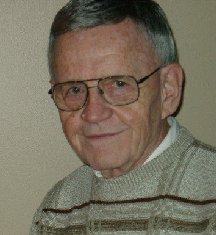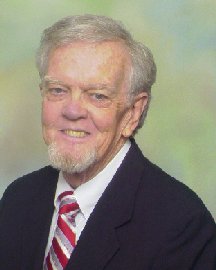Inducted into the Ring of Fame in 2006 were Phyllis Anschicks – Colorado, Ed Duncan – Utah, John Faris – Arizona and Everett Hilty – Colorado.
Phyllis Anschicks – Colorado (honored posthumously)
Phyllis Anschicks became a member of the American Guild of English Handbell Ringers in the early 1960’s. She found that there was little handbell music written, so she began composing her own. As a professional musician, experienced with church music programs, she found that composing handbell music was her “niche”.
One pleasure that Phyllis found in her association with handbell choirs was the closeness and cooperation that developed in a group. Children could play next to a senior and get along perfectly. After years of working as a church musician, Phyllis left her church post to start two new community groups and continue working with Gal-axies , an established Women’s Choir. Phyllis served as Area 11 Chair, and was Festival Chair for the 1983 Area XI Festival held at the University of Colorado in Boulder.
Her composition, “Mountain Grandeur,” a part of a work entitled “LEGACY” (A Tone Poem for Handbells) commissioned by the Fort Collins, Co. Centennial-Bicentennial Council for the Centennial-Bicentennial English Handbell Festival November 4, 1976 is a favorite of handbell choirs in Area XI. To honor Phyllis’ contributions, the Area XI 2002-2004 Board established the “Phyllis Anschicks Memorial Composition Fund.” All proceeds from the sale of this composition are donated to the Fund. A portion of the Fund supported a commission in 2006.
Ed Duncan – Utah
Although now retired, Ed Duncan is the founding director of the Wesley Bell Ringers of Christ United Methodist Church in Salt Lake City, UT. He began some 35 years ago with a 2-octave set of Schulmerich handbells for his eight high school ringers. The 25 bells were purchased through the sale of hoagie sandwiches.
As more and more kids came to see what this handbell thing was, Ed added more and more bells. The Wesley Bell Ringers now probably have the single largest collection of handbells in the country, including the very first set of Malmark 6th octave bells. Their “handbell orchestra” includes a six octave set of handbells, a four octave set of handbells, a four octave set of handchimes, two octaves of Whitechapel Cup Bells, a two octave set of Schulmerich Silver Melody Bells, and a two octave carillon. It also includes orchestral chimes, cymbals, metallophone, steel drum and an assortment of rhythm instruments. Ed invented the Boom-A-Gong, a xylophone looking instrument with metal bars and resonators tuned to the American handbell formants (fundamental and 12th) that covered the range from C2-B2. Ed has been innovative in designing tables and removable music stands for his choirs as well as the stands for the various instruments in the “orchestra”. He utilizes the different sounds of the various instruments, as well as the instrumental, vocal, and dance talents of his ringers to enhance the music his groups perform. Since there really is no music for this unique size of instrument, Ed created his own arrangements of classical music (such as Bach’s 2nd Brandenburg Concerto), hymn tunes, etc.
The Wesley Bell Ringers, usually numbering up to 30+, toured nationally – rotating the northern third of the country one year, with the central third and then the southern third in succeeding years. This allowed the kids to see and experience all the contiguous states in 3 years. The Wesley Bell Ringers have also toured through Alaska, Hawaii, and all provinces of Canada and Mexico. Through the years, Ed has involved approximately 400 youth in the Wesley Bell Ringers. He has never turned away a youth that wanted to be in his bell choir. When they didn’t have enough bells, they just bought more. Billed as “Salt Lake City’s ‘Other Choir'”, the Wesley Bell Ringers have created more visibility for handbells nationally and allowed more people to experience handbells as an instrument than any other handbell choir.
Today, the Wesley Bell Ringers continue to maintain the tradition of touring that Ed started so many years ago. One interesting tidbit about Ed is that he loves to do needlepoint. He designs his own creations and has taught the youth how to do needlepoint on the long bus rides while on tour.
Ed Duncan served the AGEHR as Area XI’s first Area Chair in 1971, after the re-alignment of areas, expanding from 9 areas to 11 areas.
One more thing….the Wesley Bell Ringers continue to fund their activities through the sale of hoagie sandwiches and rummage sales.
John Faris – Arizona
John C. Faris holds a BME degree from Oklahoma Baptist University and a MAE (Music) degree from Arizona State University. He has experience as an elementary school, high school and college music teacher. His specialty fields have included band, choral and handbells. For 19 years he conducted “Las Campanas de Agua Fria,” along with 3 other handbell choirs at Agua Fria Union High School in Avondale, Arizona. Upon leaving high school teaching he accepted the position of handbell director at Phoenix College where he conducted “Bell Canto” for 18 years. Upon experiencing some health problems, he took a few years off from the college and has now returned as the conductor of the Phoenix College Concert Band. (The college handbell choir is still flourishing under new leadership.) He has also served as choral conductor and handbell director at several churches in the Phoenix area. He also conducted a community choral group in the west valley area of Phoenix for 18 years. He also served as conductorof the city of Glendale Summer Band for many years.
Aside from his teaching responsibilities, his past professional association positions include: the chairmanship of the Committee for Handbells in Formal Education (now CHIME) of AGEHR; Arizona chairman of AGEHR; 2 terms as president of the Arizona Music Educators Association; and president of the Arizona Band and Orchestra Directors Association. He recently retired as the executive director of the Arizona Music Educators Association (MENC) a position which he held for 12 years. For the past 4 years he served on the music committee for the National Association of High Schools.
In 1972 he was named the Arizona Music Educator of the Year and in 2005 was awarded the Outstanding Music Education Alumnus Award by Arizona State University and the prestigious Distinguished Service Award by AMEA. AMEA also presented him a “brick” in the MENC Walk of Fame.
He has been active in festival production for all idioms of music in Arizona and has served as a clinician and adjudicator.
Everett Jay Hilty – Colorado
Everett Jay Hilty describes his introduction to handbells in the 1960s as being “conned into becoming involved … in the Neanderthal days of modern handbell ringing.” The University of Colorado owned 49 Whitechapel handbells for the Modern Choir to use, but they had been retired to a closet, so Chuck Byers asked Everett if he would work with him on a handbell choir. Everett readily agreed; Chuck showed up for the first rehearsal and was never seen again, leaving Everett, who knew nothing whatsoever about handbells, to fend for himself.
Everett’s handbell methods were unique. He “spent hours analyzing ‘busy’ and ‘lazy’ bells in each composition in an attempt to keep all twelve players fairly busy at all times.” This resulted in the necessity for everyone to trade bells between all selections. Everett filled in the lengthy gaps while this was going on with much bell history, composition notes and anecdotes-“anything to keep the show going. Our concerts consisted of a disjointed lecture interspersed with handbell selections.”
Following the University Ringers’ embarrassing participation in the 1972 Area XI festival in Estes Park, they tried the “more or less scale-wise system popularly used throughout belldom.” Still dissatisfied, Everett returned to the drawing board and devised a new system of bell distribution to keep everyone busy at all times, still in use by a number of bell choirs today. (See OVERTONES 1955-1986, p. 353).
Everett Jay Hilty is well known as an organist, teacher of organ and church music, composer, lecturer, author of several instruction books and numerous articles. His choral, organ, and handbell compositions have been published by twelve major publishers. Everett is also an accomplished carilloneur, often entertaining with the CU carillon before concerts at Macky Auditorium even after his retirement, and he was the official carilloneur for the Winter Olympics in Squaw Valley in 1960.
On the CU faculty from 1940 till 1978, Everett left a legacy in organ and handbells. He designed the Division of Organ and Church Music at CU, and was for many years its head. After retiring as Professor Emeritus, he continued to direct the University handbell ensembles until 1989, including an alumni group known as The High Plains Ringers.
As a composer, Everett has stretched the traditional concept of melody and harmony, writing music that is rhythmically based and explores the special sonorities of handbells. He has presented workshops at national AGEHR festivals and conventions, as well as conducting regional handbell festivals and workshops.
AGEHR honored Everett Hilty as an “Honorary Life Member,” the Guild’s highest award. He has also received the University of Colorado Distinguished Alumni Award. He is listed in several “Who’s Who” anthologies including the “International Who’s Who in Music,” London.
EPILOGUE – Everett was 96 when he was inducted into the Area 11 Ring of Fame in 2006. He passed away on November 1, 2006. His Memorial Service was held on March 31, 2007 in Macky Auditorium on the Colorado University Campus in Boulder, CO.




